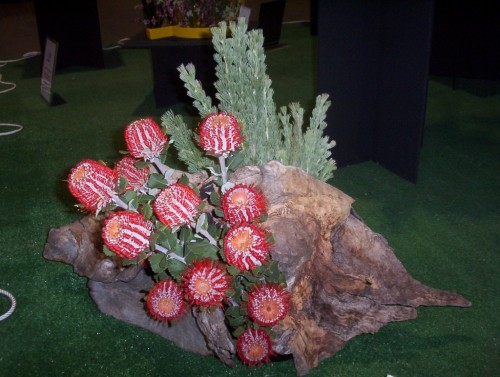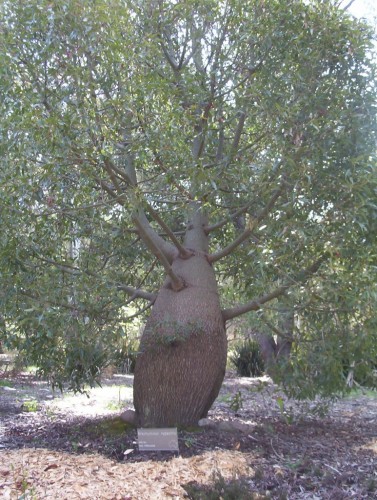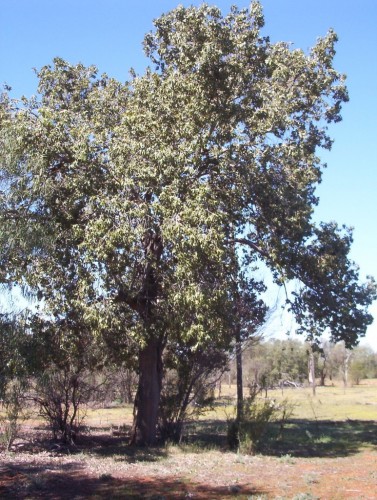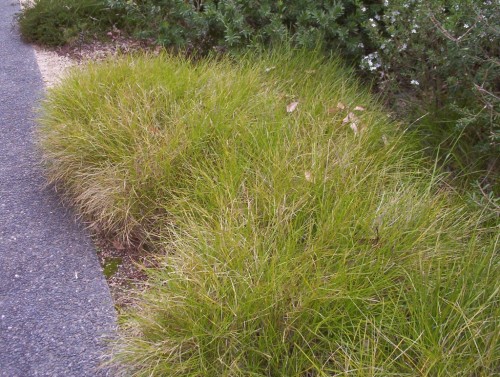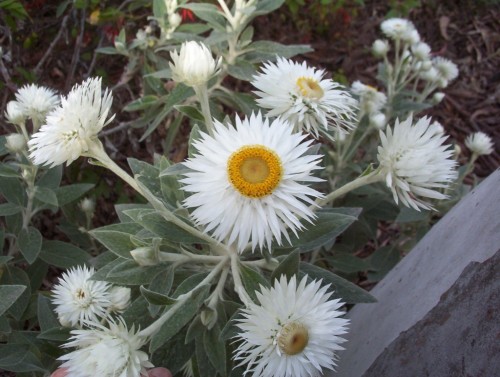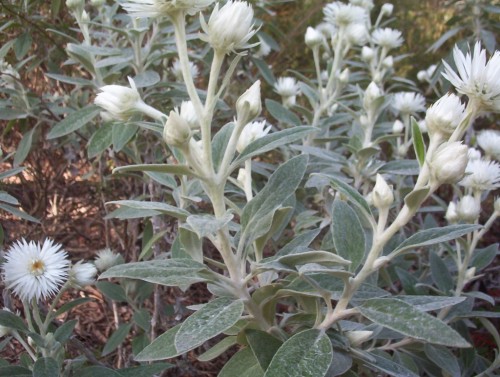Australian native Plants in Flower Arrangements.
This one uses Banksia coccinea as the feature flower. In the background is the grey -green foliage from Adenanthos serieus (Woolly Bush). Woolly Bush is the easier of the two plants to grow and they are quite drought tolerant. I have seen few good specimens of Banksia coccinea in South Australian gardens. I believe they are being grown in the Hills for the cut flower trade. The soil in that region is less alkaline and well drained. As a rule of thumb, Banksias will grow where there is excellent drainage even if the soil is alkaline.
The use of a mallee stump to form the arrangement makes this a truly unique Australian ‘picture’.
Brachychiton rupestris (Bottle Tree)
The trunks of the trees are prominently bottle shaped with large specimens having a diameter up to 2m (6 feet). The tree is hardy in most areas once established and of course would appreciate some water during hot dry periods. Young trees are slow growing and make attractive and unusual pot plants for some years.
This tree is an important fodder tree for stock during dry periods. The Aborigines ate the young roots and seeds either raw or roasted.
.
Brachychiton populneus (Kurrajong)
These trees are semi deciduous, losing their leaves just before flowering. This particular species has bell shaped cream flowers, blotched with red on the inside. Young leaves are tinged with pink. They are very easy to grow and tolerate a wide range of climatic conditions and soils. Although very drought tolerant, they appreciate water during the summer. This species is frost hardy.
Because they are slow growing while young, they make excellent pot plants and are used for indoor decorations.
Further information can be found here.
Lomandra confertifolia ‘Little Con’
This tufted plant has been around for a while and has proved to be hardy in many locations. This particular selection has been promoted in garden centres for some time. In the photo it is being used as border plant. Lomandra confertifolia originates in Queensland with some forms appearing along the coast to Sydney. The requirements are generally filtered light and good drainage. This small form seems to be hardy in more open positions. Generally they tolerate light to moderate frosts. Grasses can be seen in this use also here.
Helichrysm elatum (Tall White Everlasting)
This plant can grow between one to two metres tall. The flowers are often in clusters. Although plants flower in spring in the wild, in garden conditions this flowering continues into summer. The plant needs root protection and a semi shaded position. The plant will also grow in exposed coastal positions.
Helichrysm elatum is a good plant for cut flowers. The flowers can also be wired and dried and this needs to be done before the buds open.
This plant originates in Victoria, NSW, and Qld, on tablelands, coast and foothills. It is generally found in shade among rocks in rich soils.
